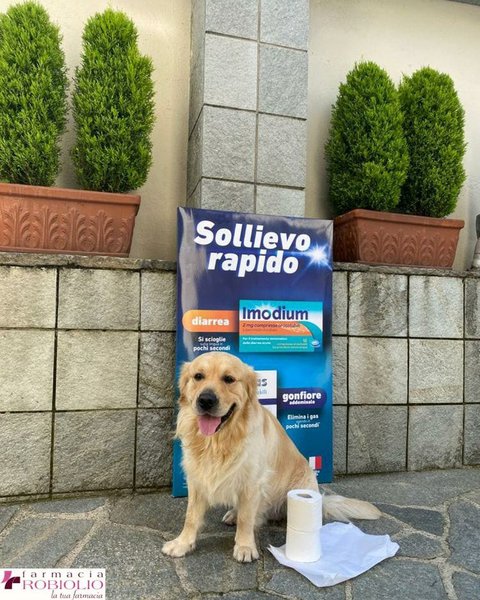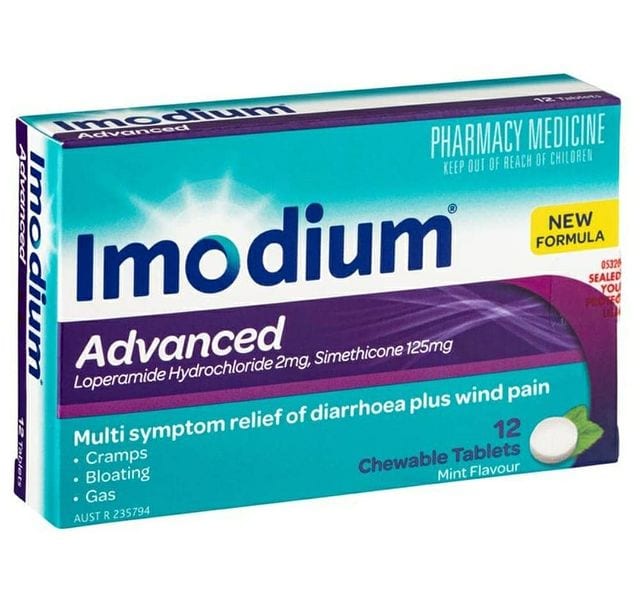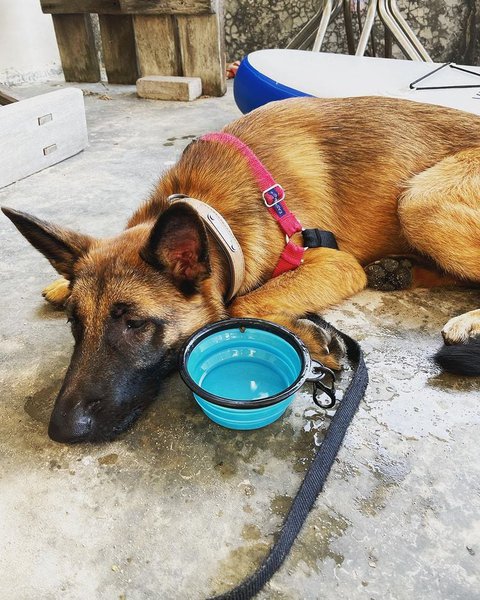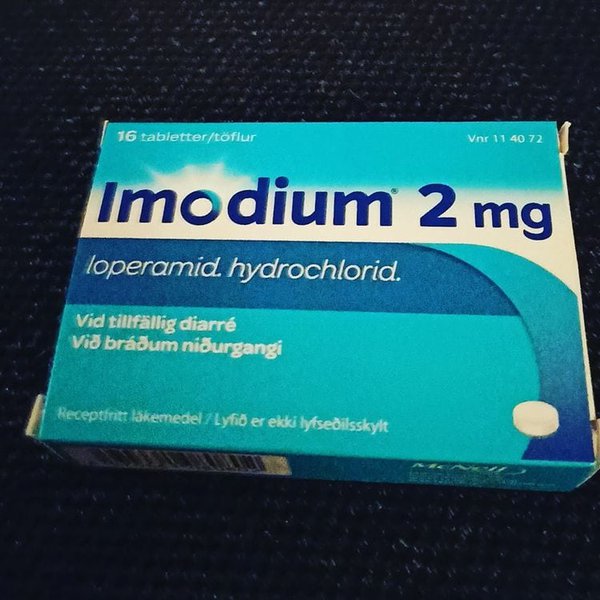Imodium is one of those drugs that is more or less a staple in every home medicine cabinet. It comes in super handy if you get a severe case of the runs and need some help getting your bowel back into normal rhythm.
If your dog has suffered or is suffering from a nasty bout of diarrhea, you have probably considered using Imodium as a solution to put your dog out of its misery. But is it a good idea?
You can safely give your dog Imodium, under specific circumstances, primarily to deal with diarrhea. However, it is not always a good idea as it can exacerbate the irritation of their gastrointestinal tract for some dogs.
To help you out, here is an assortment of situations where it is okay and where it is not a good idea to give your dog Imodium to deal with their diarrhea. That way, you don’t end up unwittingly causing more harm than good to your already-suffering doggy.
Can Dogs Take Imodium?

Yes, dogs can take Imodium. Imodium is the trade name for the drug Loperamide that is meant to treat diarrhea. It works by reducing motility within the gut.
For the most part, it is safe and effective for use in dogs that have diarrhea. However, there are a few exceptions where Imodium might be harmful when given to dogs. Here are some of these exceptions where Imodium should be avoided in dogs.
Dogs With Mutant Gene MDR1
The MDR in the MDR1 gene means multi-drug resistance. It refers to a genetic mutation in some dog breeds that results in their inability to metabolize certain drugs, including Imodium. This is far more common in herding dog breeds such as Australian Shepherds and German Shepherds.
There is also a general rule of thumb where Imodium has been avoided in all shepherd dog breeds as well as dog breeds with white feet.
This may not be the most accurate way to tell which dogs can safely use Imodium, but it comes in handy in cases where MDR1 genetic testing may not be a feasible option.
Diarrhea From Infection
If your dog is suffering from a gastrointestinal infection, the last thing you want to do is to have the causative organisms stuck in the gut. In these cases, diarrhea helps flush out the pathogens and should be allowed to continue within safe limits.
Diarrhea From Poisoning
As with diarrhea from infection, Imodium should be avoided in cases where the dog’s diarrhea was triggered by the ingestion of a toxic substance. Imodium would stall gut motility and worsen the effects of the toxin that the dog ingested.
Dogs With Head Injury
The active component in Imodium is an opioid. If your dog is suffering from a head injury in addition to their diarrhea, the opioid components of Imodium could worsen symptoms like altered levels of consciousness.
In very severe cases, it could cause crucial systems like your respiratory control centers to shut down, which could be life-threatening for the dog. However, this would take very high doses of Imodium in the injured dog.
Dogs With Liver Failure
Imodium is metabolized and excreted from the dog mainly through the liver. If the liver is not doing its job right, your dog will end up with unhealthy levels of Imodium in its system. This increases the chances of the dog experiencing side effects like constipation and sedation.
Is Imodium Harmful To Dogs?

Imodium is typically safe for dogs. However, it can be harmful if taken in dogs susceptible to its side effects. This includes dogs with the MDR1 gene, liver disease, head injuries, as well as systemic health issues like thyroid disease.
Imodium may also be harmful to dogs when taken in doses higher than the recommended levels for the dog’s specific size.
Here are some of the side effects your dog may experience in either of these two scenarios.
Constipation
Imodium works by reducing gut motility. Sometimes it does its job a little too well and ends up causing constipation. This will result in abdominal swelling and discomfort for the dog.
In some cases, it could cause fatal consequences like gastric dilatation volvulus in dogs that are susceptible to the condition.
Sedation
As a drug that targets opioid receptors, Imodium could cause sedation by acting on the opioid receptors in the brain.
Fortunately, this is a very rare side effect and typically happens in cases of Imodium overdose or in situations where the right dose is inappropriately metabolized and excreted.
Vomiting
Imodium could also cause nausea and vomiting in your dog. This side effect is both a result of the drug’s activity in the gut and in the parts of the brain that control nausea and vomiting.
The vomiting can further lead to dehydration if the dog has already gone through several bouts of diarrhea.
What Kind Of Imodium Is OK For Dogs?
Imodium that comes in liquid preparations is way better for dogs than the pill form of the drug. For some perspective, here are some of the benefits that liquid Imodium has over Imodium tablets.
Less Choking Risk
Pills pose a choking hazard, especially for small dogs or dogs that are simultaneously experiencing vomiting and diarrhea. With liquid Imodium, you have less to worry about as far as choking is concerned.
Easier To Administer
Getting a dog to take a pill is always a tricky thing. If you wrap it up in a slice of cheese or meat, there is always the chance that they will notice and spit it back out.
With liquid Imodium, it is easier to administer the drug even to a resistant pooch. All you need is a good administering tool like a dropper and a good grip, and it will all be over in a few seconds.

Easier To Regulate The Dose
Imodium comes in 2-mg doses which is the dose recommended for dogs ranging from 40 to 50 lbs. For smaller dogs, you have to deal with annoying calculations for the sake of their safety and manually break the pills down into approximate doses.
With liquid Imodium, all you have to do is get an administering tool that has markings. With this, you just pour out as much as the vet recommended, and you are good to go.
Typically More Palatable
Many Imodium liquid preparations tend to be flavored and are thus easier to administer to the dogs. Just make sure that the preparation you get is pooch-friendly.
This is because some ingredients like artificial sweeteners in Imodium made for humans can be very dangerous for the dog.
No Need To Give With Decoy Snacks
If your dog has an irritated gut, the last thing you want to do is to be feeding it more food. Pill preparations of Imodium may force you to do this to get your dog to take the medication.
With liquid Imodium, you don’t have to burden the already struggling gut of your dog with more food for it to process.
How Much Imodium Do I Give My Dog?
The amount of Imodium that you should give your dog depends on their weight. The 2 mg tablets that the drug typically comes in are meant for large dog breeds ranging between 40 to 50 lbs.
To be safe, consult your vet for help figuring out the ideal dose for your specific dog.
How Long Does It Take For Imodium To Work On Dogs?
It takes about 1 to 2 hours for Imodium to work on dogs.
After the drug has been absorbed, it takes about 11 hours for the levels to reach half of the originally absorbed amounts in your dog’s system. For this reason, many vets recommend that your dog take Imodium 2 times a day.
It takes a further 2 to 3 days for the drug to be fully cleared from the dog’s body.
What Happens If I Give My Dog Too Much Imodium?
If your dog takes more Imodium than it should, the opioid-related side effects of the drug will be intensified. The consequences could actually be fatal in the right doses.
Therefore, it is crucial that you get your dog urgent veterinary attention as soon as you realize that you get them too much Imodium.
Let’s take a look at two of the most important consequences of an Imodium overdose in your dog that should get you concerned.

Abdominal Pain
Your dog will be in a lot of discomfort from the cramp-like pains caused by the Imodium overdose. They may not want to be handled, and you may also notice that they vocalize more than usual, whether it is whining or weak barking.
This abdominal pain is also associated with a reduced appetite which can extend to lowered fluid intake. This eventually can lead to dehydration.
Sedation And Altered Levels Of Consciousness
The effects of an Imodium overdose are in some ways similar to those of an opioid overdose. Your dog will appear drowsy and may even slip into a coma if the dose is high enough.
Perhaps the biggest risk of such an overdose is the shutdown of crucial systems in the brain, like the centers responsible for regulating breathing and cardiac activity.





